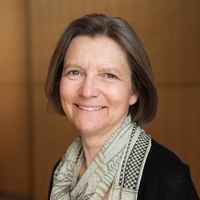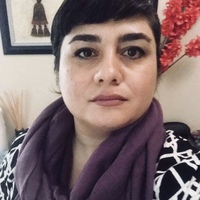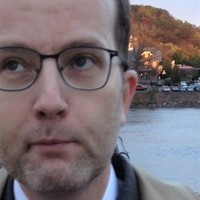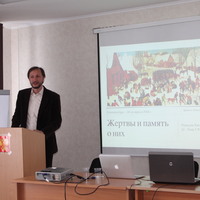Papers by Svetlana Ushakova

Walden, Victoria Grace (ed.). Digital Holocaust Memory, Education and Research. 1st ed. Cham: Springer International Publishing AG., 2021
Since their initiation in 2010, the interactive biographies of the Dimensions in Testimony projec... more Since their initiation in 2010, the interactive biographies of the Dimensions in Testimony project of USC Shoah Foundation have been central to discussions about the ethics of Holocaust memory in the digital age. The recent additions of foreign-language interactive biographies pose additional ethical and methodological questions to engaging with testimony via interactive technology. Giving detailed insight into the production process of the first German- and Russian-language interactive biographies, this article addresses the reception and integration of the project in the diverging German and Russian national memory discourses. Its authors argue that the project occupies a liminal space between the hyperconnected, the transnational and the local that demonstrates a redefinition of the role of the Holocaust archive after the connective turn.
Historical Courier, 2022
This review of the Holocaust collection of University of Southern California Shoah
Foundation’s ... more This review of the Holocaust collection of University of Southern California Shoah
Foundation’s Visual History Archive contains a short history and numerical and thematic description of the collection. The focus of the review is video interviews of witnesses who share their
memories about the events of the Russian and Soviet history. There are about 13 000 such interviews recorded primarily in the second half of the 1990’s in almost 20 countries around the world.
The review shows that the size and diversity of the collection as well as the indexing system developed and used by the archive makes this collection a valuable source for research on Russian and
Soviet history of the 20th century.
Lessons and Legacies XV: The Holocaust: Global Perspectives and National Narratives, 2018
One of the main paradoxes that puzzle many researchers is a statement repeated in many oral histo... more One of the main paradoxes that puzzle many researchers is a statement repeated in many oral history interviews that there was no antisemitism in the prewar Soviet society and many children were not even aware about their and their friends ethnical identity. The researchers cannot help but wonder if this statement was true, how it was possible that the next day Germans or Romanians came to a place everyone knew who were Jewish and some were ready to share this information with perpetrators. This paper discusses relations between Jews and Gentiles in the Soviet city of Odessa in the 1920's -1930's. Though it is unlikely that it will help to solve this paradox, it is aimed at creating a complex picture of the relationships rather than a dichotomous representation.
In the article, various strategies of the accused persons’ behavior are studied. Their behavior g... more In the article, various strategies of the accused persons’ behavior are studied. Their behavior generally did not remain the same and varied with the development of the investigation. From the examples of some accused persons, we conclude that their behavior were usually determined by their physiological features, life and professional experience, and the extent of acceptance of Soviet policy and economy. However, all of them were in the situation of making a choice between saving their own good name and the good names of their colleagues or saving the life. For many of the accused persons, this situation became a real tragedy.









Uploads
Papers by Svetlana Ushakova
Foundation’s Visual History Archive contains a short history and numerical and thematic description of the collection. The focus of the review is video interviews of witnesses who share their
memories about the events of the Russian and Soviet history. There are about 13 000 such interviews recorded primarily in the second half of the 1990’s in almost 20 countries around the world.
The review shows that the size and diversity of the collection as well as the indexing system developed and used by the archive makes this collection a valuable source for research on Russian and
Soviet history of the 20th century.
Foundation’s Visual History Archive contains a short history and numerical and thematic description of the collection. The focus of the review is video interviews of witnesses who share their
memories about the events of the Russian and Soviet history. There are about 13 000 such interviews recorded primarily in the second half of the 1990’s in almost 20 countries around the world.
The review shows that the size and diversity of the collection as well as the indexing system developed and used by the archive makes this collection a valuable source for research on Russian and
Soviet history of the 20th century.